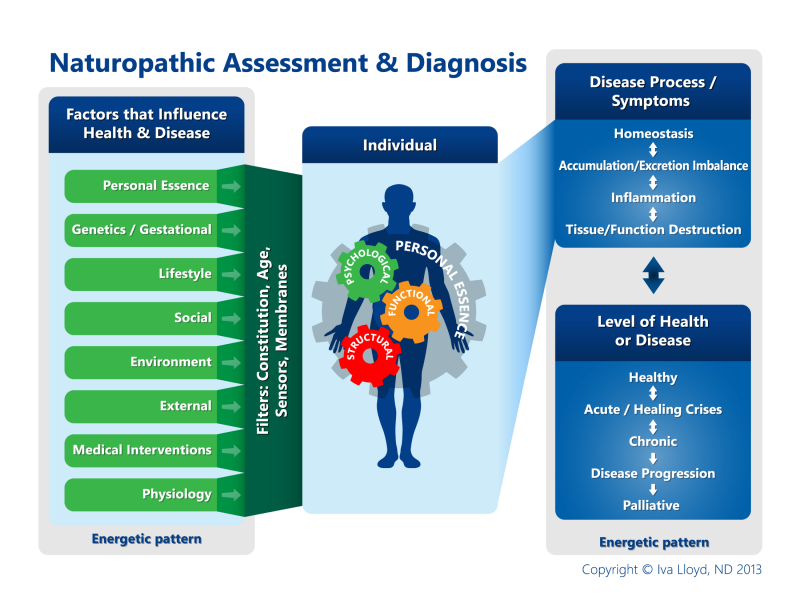Naturopathic Assessment
| See Also | Naturopathic Theories and Practice |
|---|
A naturopathic assessment is more than just diagnosing the disturbing symptom or condition it involves three main aspects: identifying the current condition including the health risk and progression; determining the vitality or healing potential of the person involved; and equally important determining the true causal factors that initiated or aggravate the condition(s).
During a naturopathic assessment the importance of the therapeutic encounter is paramount. A naturopathic doctor takes the time to listen to the patient's story and to understand how their health concerns are impacting their life. There is a greater emphasis in naturopathic medicine on understanding symptoms in detail, paying attention to when they started and what makes them better and worse.[1]
A naturopathic assessment includes a detailed consultation, laboratory testing, and physical exam. The aim of the assessment process is to link the patient's subjective experiences and symptoms to what is happening on a physiological level. It is to determine not only the diagnosis or what disease or condition the patient has, but why. It is determining the why, the causes of disease that influences the length and depth of a naturopathic assessment.
Detailed Consultation
It is common for the initial visit with a naturopathic doctor to be 1 to 2 hours in length and follow-up visits to be about 1/2 hour. It is throught the verbal aspect of the assessment that the details behind the symptoms are revealed. In naturopathic medicine the patient-practitioner relationship is recognized as having an important assessment and therapeutic value. A naturopathic consultation includes:
- review of family history
- past and present medical history
- detailed review of symptoms
- detailed information about nutrition, exercise and other lifestyle factors
- look at the impact of social relationships and dynamics
- discussion on the impact of emotional stressors and thought patterns
- look at a person's environment and their exposure to toxins and chemicals
- allergies and history of reactions to any medications or treatments
- listing of current prescription medications, supplements, herbs, remedies and other natural health products
- overview of different treatments
- questionnaires, as deemed necessary
Laboratory Testing
| Article | In-Office Lab Tests, Diagnostic Testing and Assessment Tools: A Review, Vital Link; 2012 Summer |
|---|
The laboratory testing that a naturopathic doctor does is partly determined by the regulations of each jurisdiction. It is common for naturopathic doctors to perform some test, like urine analysis in-house, or for them to draw blood and send it to a lab for analysis. In other cases a naturopathic doctor will request copies of lab tests that have been completed by a medical doctor or will recommend additional testing, if required. The breadth of laboratory testing that is completed or requested by naturopathic doctors is extensive and can include:
- standard blood tests
- testing for food sensitivities
- salivary testing for hormones
- specialized testing for heavy metals and exposure to environmental toxins.
- detailed testing on metabolic processes
- X-ray examinations and/or scans
Physical Exam
A detailed history is followed by a standard medical physical examination. Many naturopathic doctors are also trained in additional examination procedures such as tongue and pulse assessment. Depending on the regulation of each jurisdiction, some exam procedures such as gynaecological exams may be restricted. Common aspects of a naturopathic physical exam include:
- standard medical physical examination
- breathing style, as well as function
- gait assessment
- postural assessment
References
- ↑ Lloyd Iva (2009) The Energetics of Health, a Naturopathic Assessment, Elsevier.
